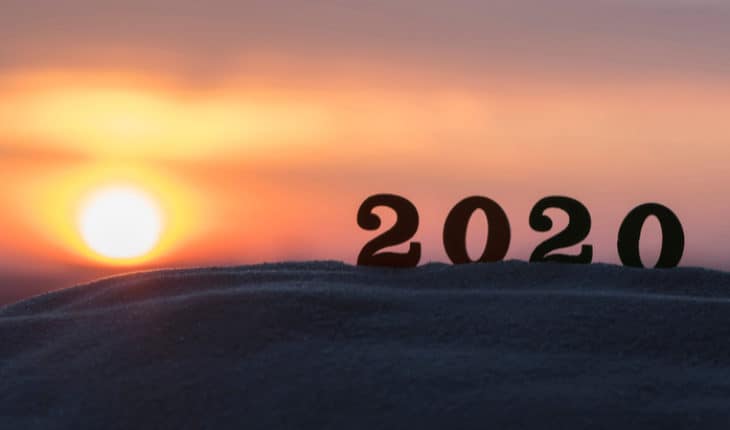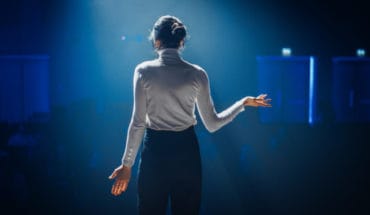Things we know at the end of 2020 (part 2): From lockdowns and travels bans to isolation and testing queues, we’ve all experienced a very different year. So what do we know at the end of 2020 that we had absolutely no clue about before?
In Part 2 of our series, University of Melbourne experts, Dr Clayton Chin, Professor Jeannie Marie Paterson, Professor Anna Meredith and Professor Andrew May share the things they’ve learned during 2020 that they had no clue about just 12 months ago.
DR CLAYTON CHIN, SCHOOL OF SOCIAL AND POLITICAL SCIENCES
2020 has been a year of extremes.
From bushfires to financial crises to the pandemic itself, nothing seems normal. But perhaps more importantly, these extremes have often been paradoxical, allowing two seemingly incompatible trends to run alongside each other.
The crisis brought on by the COVID-19 pandemic has led to both an increase in social solidarity and group-based tensions.
The rhetoric of “we are all in this together” and the real ways in which locally, regionally, nationally and internationally people have made real efforts to aid others and confront this crisis collectively, has been matched by equally deep manifestations of animosity, prejudice and intolerance.
2020 has seen the return of largest government-led spending programs for decades aimed at both stemming the tide of COVID-19, and moderating its effect on the economy and vulnerable social groups.
Such solidarity has only been matched by private expressions of support, such as the multiple campaigns across the world to support and thank our precious healthcare workers.
However, this togetherness has been matched by hate, fear-mongering and prejudice.
From attacks on Black Lives Matters protesters, to the victimisation of healthcare workers themselves, to the rise of anti-Asian sentiment in Australia and other societies of immigration, 2020 has illustrated how hate and solidarity sometimes rise and fall together, and that times with more of the one do not necessarily immediately mean less of the other.
PROFESSOR JEANNIE MARIE PATERSON, CO-DIRECTOR, CENTRE FOR ARTIFICIAL INTELLIGENCE AND DIGITAL ETHICS (CAIDE)
In 2020 many of the things I now know, that I didn’t know before, are about digital technologies and about conversations.
I learnt how to make TikToks.
This is a hilarious activity for a family in lockdown, each otherwise trying to find a quiet spot to study, work, socialise and have Wi-Fi coverage.
I also learnt about the geopolitical controversies surrounding TikTok, including about ownership, training data for facial recognition technology and the storage and movement of personal data.
2020 taught me to use Kaltura Capture, the University of Melbourne’s lecture recording software. Rather than delivering one or two hour lectures, I learnt to record themed overview lectures in short segments, integrated with readings, supplemented with discussion boards and explored through synchronous seminars.
The move from in-person to online teaching is very time consuming. But I think it made my teaching better because I needed to rethink the architecture of the classes.
It also gave me new appreciation for the skill, patience and dedication of school teachers who transitioned in and out of online teaching several times over the course of the year.
Like many of us I became closely acquainted with Zoom. Despite having online recordings, I spend lots of time talking face to face with students on Zoom.
This shouldn’t really be surprising. Students and academics learn through conversations – that is how we sound out and process ideas.
Through Zoom, I also got to see (or hear) tutors in action, in my subjects and in my children’s subjects. The care and attention I saw from this new generation of scholars to their teaching, in difficult circumstances, was truly inspiring and the best insight from 2020.
PROFESSOR ANNA MEREDITH,HEAD, MELBOURNE VETERINARY SCHOOL
I sincerely hope that the two major crises of 2020 affecting us here in Australia – the catastrophic bushfires and the COVID-19 pandemic – have at last made the public and our policy makers realise how our destructive human impacts on the environment and wildlife directly affect our own health and livelihoods, globally.
Last summer’s bushfires impacted three billion Australian wild animals, many of which were already under extinction threat, some of those may now be lost forever.
Scientists have been predicting a global pandemic due to spillover from a wildlife reservoir for decades but we didn’t really listen to the warnings of SARS, Ebola and others; we know that animals can potentially harbour thousands of pathogens that could cause disease in humans, but that’s not the real problem.
Continued destruction of, and intrusion into, wildlife habitat, global wildlife trade, and failure to combat climate change will inevitably bring more of the same unless we learn to respect and conserve biodiversity, radically change our behaviour, and acknowledge that, literally, all our lives depend on this.
Don’t blame the bats for COVID-19, it’s our own actions that brought it about, and that’s what should come home to roost at the end of 2020.
We are not apart from nature, we are a part of it.
PROFESSOR MAY,HISTORICAL AND PHILOSOPHICAL STUDIES
Australians contributing to the Journal of the Plague Year web archive left a trace of how the pandemic gave working-from-home a whole new meaning, one they could never have anticipated in their wildest dreams.
Some experienced this as the ultimate work-life balance, welcoming the fact that they could Zoom their business wearing an old cardigan on top and slippers under the table and put up with dogs barking or children coming in and out of frame.
Others saw it as an unwelcome intrusion and a breach of the domestic walls, of the invisible proscenium between intimacy and exposure.
Rooms of the house that once each had their own claim to identity — as a kitchen, bedroom, lounge or study — were now fused and muddled with multifunctional identities.
As the day proceeded from dawn through daylight to dusk, a kitchen-cum-office-cum-classroom-cum-gym inexorably cluttered and clattered and clashed, any semblance of order exhausted by nightfall.
Self-isolation sometimes meant separation from family or housemates. Home shrank from a suite of rooms to a solitary cell.
As time passed, the new reality settled.
Any latent sense of novelty morphed into a dull and constant sense of loss and of things not being quite right. A five-year-old had a Zoom birthday party – “poignant, and incomplete”. Camaraderie and solidarity were shown in the rituals of balcony beers and window wines, but it felt half-hearted.
Walking the dog gave many people a reason “to get out of the house … I wonder if we’re all going to go mad really”.
And when lockdown lifted and people left the house for one of their four essential reasons, there was an uncanny sense of something still uncertain, an invisible rubber band snapping back to the certainty of home.
This article first appeared in Pursuit.
- New lipid-based pathway discovered as key to memory formation - 25th June 2025
- Crucial link could explain how Alzheimer’s takes hold - 25th June 2025
- Understanding Your Mind Can Improve Daily Life - 25th June 2025







